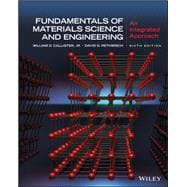This revised Sixth Edition presents the basic fundamentals on a level appropriate for college students who have completed their freshmen calculus, chemistry, and physics courses. All subject matter is presented in a logical order, from the simple to the more complex. Each chapter builds on the content of previous ones. In order to expedite the learning process, the book provides:
- "Concept Check" questions to test conceptual understanding
- End-of-chapter questions and problems to develop understanding of concepts and problem-solving skills
- End-of-book Answers to Selected Problems to check accuracy of work
- End-of chapter summary tables containing key equations and equation symbols
- A glossary for easy reference








